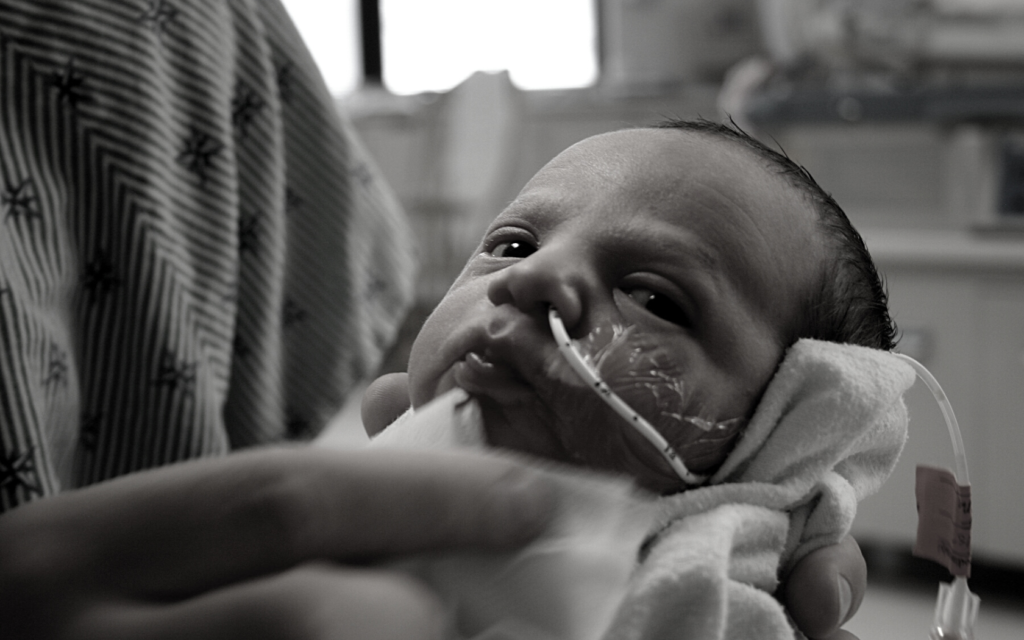Modern medical advancements have significantly reduced neonatal injuries. Even the latest technology and top tier hospitals, however, are not fool-proof. Lack of oxygen and subsequent birth injuries do still occur. This lack of oxygen is known as hypoxic-ischaemic encephalopathy (HIE). Oxygen deprivation during birth can lead to disastrous outcomes including cerebral palsy, cognitive disability, and more. Doctors have discovered that inducing hypothermia shortly after birth can reduce the consequences of HIE. This hypothermic therapy or NICU cooling has proven to reverse the effects of lack of oxygen while also preventing greater injuries such as cerebral palsy.
Did your child’s doctor fail to provide cooling therapy after obvious signs of oxygen deprivation? Did it lead to preventable injuries such as cerebral palsy? You may have a case of medical malpractice on your hands. Contact the team of Hampton & King for a free consultation. Our expert attorneys can answer any questions you may have.

Brain & Birth Injuries
Unfortunately, babies are sometimes deprived of oxygen during the labor or delivery process. This lack of oxygen is known as hypoxic-ischemic encephalopathy (HIE), a disastrous outcome leading to cerebral palsy, cognitive disability, and more. Doctors have discovered that inducing hypothermia shortly after birth can reduce the consequences of HIE. This hypothermic therapy or NICU cooling has proven to reverse the effects of lack of oxygen while also preventing greater injuries such as cerebral palsy.
If your baby was “cooled” after birth, it was for the treatment of HIE. This diagnosis raises questions about the actions of health care professionals during labor and delivery.
Causes Of Hypoxic-Ischaemic Encephalopathy
The labor and delivery room can be very stressful. There are many what-ifs involved. One of the scariest scenarios is the possibility of a baby’s brain not receiving enough oxygen during birth. This can cause brain damage and a range of other severe injuries. Here are some labor room issues that may lead to HIE:
Preeclampsia
During pregnancy, some women may experience higher than normal blood pressure levels. This is known as preeclampsia. Some consequences of this condition include premature birth, fetal growth restriction, and other complications that may lead to HIE.
Placental Abruption
This serious complication occurs during pregnancy when the placenta separates from the uterus. It can cause bleeding and severe abdominal pain. This separation can deprive a baby’s brain of oxygen.
Uterine Rupture
During a vaginal birth, the uterus may tear open. Instead of going through the birth canal, the baby could slip into their mother’s abdominal cavity, causing suffocation, HIE, or even death.
Umbilical Cord Prolapse
During a normal birth, a baby comes through the birth canal first, followed by the umbilical cord and finally the placenta. An umbilical cord prolapse means the cord drops through the cervix before the baby is in the birth canal. This can cause the cord to become compressed by the mother’s pelvic bones consequently depriving the baby of oxygen.
Amniotic Fluid Embolism
This rare condition occurs when amniotic fluid, fetal cells, and other debris surrounding a baby enters a mother’s blood stream. It leads to a strong immune response which can cause serious complications to both the mother and the baby, including HIE.
Effects Of NICU Cooling Therapy
There is only one established treatment that helps minimize brain damage from hypoxic-ischemic encephalopathy: hypothermia therapy. Some may know this as therapeutic hypothermia, neonatal cooling, or cooling therapy. In order for this treatment to be effective, it must be given shortly after birth – ideally within six hours.
How NICU Cooling Therapy Works
Hypothermia therapy is all about bringing a baby’s temperature down. Even below homeostasis. This cooling down helps the brain to recover from the damages brought on by a hypoxic ischemic injury.
There are two ways in which a doctor may choose to reduce a baby’s temperature:
- Selective brain cooling. This is where a cooling cap is used only on the head.
- Whole body cooling. A baby is entirely placed on/wrapped in a blanket that circulates cool water.
The use of one over the other is dependent on what is available, doctor’s preference, or the clinic’s cooling protocol related to HIE. Either method can help induce hypothermia and reverse the effects of brain damage from HIE. The ultimate goal is to bring the baby’s temperature down to 92.3 degrees Fahrenheit and keep it there for at least 72 hours.
What NICU Cooling Does To The Body
You might be thinking, “what’s the significance of 92 degrees?” At this temperature, the body’s metabolic rate slows down. This allows affected cells to recover from the injury and helps prevent the spread and permanence of brain damage.
Care During Hypothermia Therapy
Babies undergoing hypothermia therapy must be closely monitored. Sometimes, intervention might be necessary. Here are just some things medical providers need to watch out for before, during, and/or after cooling therapy:
- Seizure activity
- Infections
- Excessive acid in the blood
- Respiratory distress
- Abnormal glucose levels
Once a baby has undergone hypothermia therapy, it is critical to re-warm them slowly. The temperature should only be increased by small increments until the normal basal body temperature is reached. If the temperature is increased too quickly, reperfusion injury can occur. This is when blood flow is restored too quickly to the brain – a process that may damage brain tissue and cells even further.
Hypoxic Injuries, NICU Cooling Therapy, & Medical Malpractice
When your baby suffers oxygen deprivation during birth, there is one tried and tested way to reduce the complications. But what happens if your doctor doesn’t do anything about it? What if your doctor doesn’t order cooling therapy? You probably have a case of medical malpractice on your hands.
Because when the doctor doesn’t order hypothermia therapy on time, or at all, a baby’s HIE could lead to permanent brain damage. This can further cause more serious complications such as cerebral palsy or cognitive disability. These injuries can last a lifetime. A lifetime of pain and suffering. A lifetime of medical bills. And possibly an entire lifetime of 24/7 care for that baby. Preventable injuries due to a doctor’s negligence.
Because cooling therapy, given on time, could possibly have prevented the permanence of brain damage and avoided those injuries. If you believe your baby was a victim, please contact our office for a free consultation.

FAQ’s
Leading NICUs in hospitals are equipped with tools, resources, medications, and technologies that can help treat a variety of newborn conditions and illnesses. NICU cooling is yet another advancement that can help newborns suffering the effects of oxygen deprivation. It utilizes a waterbed-like blanket to help cool down a baby’s body temperature.
Some babies go through trauma during labor and/or delivery that can cause their oxygen levels to drop. Oxygen deprivation can bring on a host of injuries including cognitive dysfunction. Some issues that may result in oxygen deprivation include:
► Placental abruption
► Amniotic fluid embolism
► Umbilical cord prolapse
► Preeclampsia
Oxygen deprivation alters the many occurrences of the brain: pH levels, blood flow, carbon dioxide levels. Chemical reactions are slowed down and neurological impairment begins. Cooling therapy ultimately lessens the severity of these issues.
The cooling blanket is used to lower a baby’s basal temperature so that it reaches an induced state of homeostasis. At a lowered temperature, the body’s metabolic process slows down. Because of this, affected cells are given the chance to recover. This allows the damage that occurred in the brain to slow down or even be reversed.




